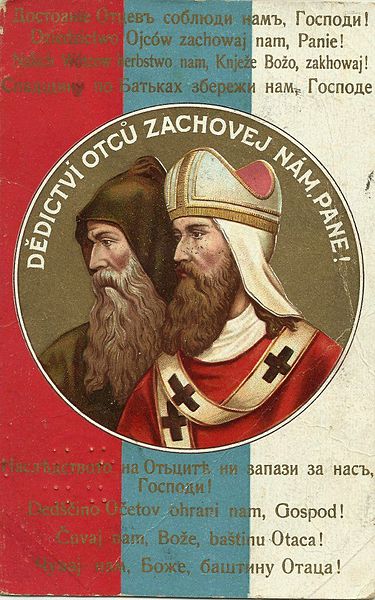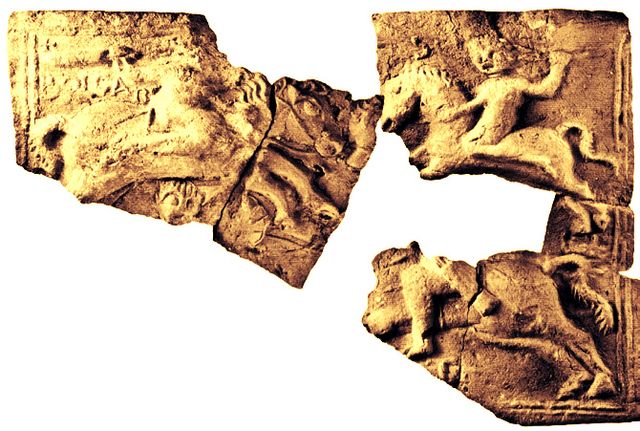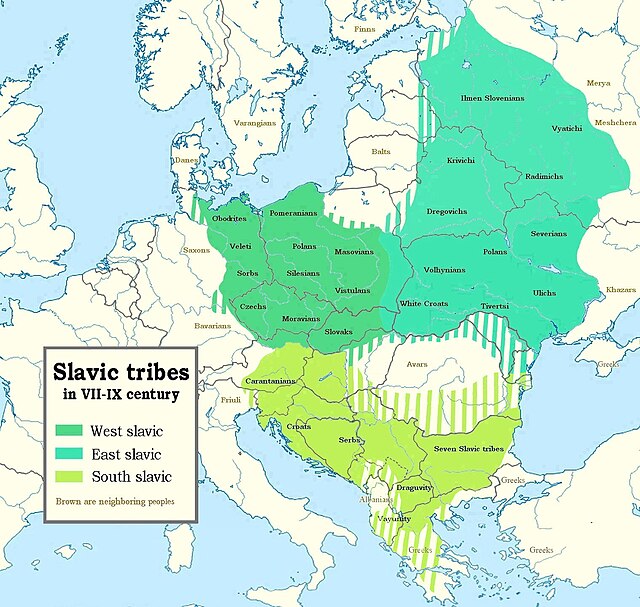Pan-Slavism, a movement that took shape in the mid-19th century, is the political ideology concerned with promoting integrity and unity for the Slavic people. Its main impact occurred in the Balkans, where non-Slavic empires had ruled the South Slavs for centuries. These were mainly the Byzantine Empire, Austria-Hungary, the Ottoman Empire, and Venice.
Pan-Slavic postcard depicting Cyril and Methodius, with the text "God/Our Lord, watch over our grandfatherland/ heritage" in 8 Slavic languages.
The Slavs or Slavic people are a group of peoples who speak Slavic languages. Slavs are geographically distributed throughout the northern parts of Eurasia; they predominantly inhabit Central Europe, Eastern Europe, and Southeastern Europe, though there is a large Slavic minority scattered across the Baltic states, Northern Asia, and Central Asia, and a substantial Slavic diaspora in the Americas, Western Europe, and Northern Europe.
Terracotta tile from the 6th–7th century AD found in Vinica, North Macedonia, depicting a battle scene between the Bulgars and Slavs, with the Latin inscription BOLGAR and SCLAVIGI
Slavic tribes from the 7th to 9th centuries AD in Europe
Seal from the pan-Slavic Congress held in Prague, 1848
The "Zbruch Idol" preserved at the Kraków Archaeological Museum





